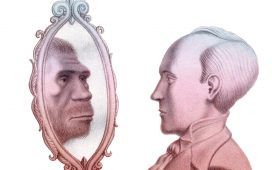There was a time—a long time—when, by one measure, Maria Sharapova was the biggest star in women’s sports. According to Forbes, she was the highest-paid female athlete in the world for eleven consecutive years, from 2004 until 2015. Her performance on the court had something to do with this: she was a five-time Grand Slam champion, winning each major at least once, and in four different years she was the No. 1 player in the world. But that was only part of the story. She leveraged her lean physique, blond hair, good looks, and sharp business instincts to create a major international brand. Fittingly, when she announced her retirement from professional tennis, on Wednesday morning, she did it not in a press conference but with an essay that was published simultaneously by Vanity Fair and Vogue.
Sharapova’s brand could be boring—she created prettily packaged candy and promoted upscale water—but on the court she could be mesmerizing. The drama didn’t come from the style of her game, which was often monotonous: big serve, booming groundstrokes. It was in her relentlessness and resilience. She shrieked. She lunged. She clenched her fist and pounded her quad as she readied herself to return serve, sweat soaking through her dress. (She had her own designer line at Nike.) The friction between the smoothness of her brand—its sanitized sex appeal and vague suggestion of snobbery—and the gutsiness and grit of her game made her compelling. It’s hard to name another athlete who was at once more image-conscious and more willing to subvert that image again and again. She was not always the best player on the court, but she was usually the most desperate one, and was the better for it.
Her legacy is not uncomplicated. In 2016, she tested positive for meldonium, which had recently been added—apparently without Sharapova’s knowledge—to the World Anti-Doping Agency’s list of banned drugs. Sharapova claimed to be using it for medical rather than performance-enhancing purposes, and her two-year ban was reduced to fifteen months on appeal, after a panel concluded that she had not intended to cheat. But the damage to her reputation was done. She tried to come back, in 2017, but her body never quite allowed it. She struggled to finish matches, let alone make it into the deep rounds of tournaments. Her shoulder was frayed, and the rest of her, stressed by years of overcompensating, was breaking down. It has been clear, for a while now, that her retirement was imminent. She is thirty-two years old and currently ranked No. 373. Characteristically, she persisted long after many people thought she would, or could.
The last time many people saw Sharapova play was last summer, at the U.S. Open, when she faced Serena Williams. Williams routed her, 6–1, 6–1. The rivalry between Sharapova and Williams may have been the most lopsided in the history of professional sports. Sharapova defeated Williams in the final of Wimbledon, in 2004, at the age of seventeen, and beat her again later that year. Williams beat her the next nineteen times they met on the court. (Technically, Sharapova defeated Williams in 2018, at the French Open—but only because Williams withdrew with an injury.) And yet it was a rivalry. The two women were not shy about how much they disliked each other. Even when the outcome seemed inevitable, their matches crackled with a special kind of electricity. Sharapova was Williams’s great if overmatched foil, on the court and in American culture.
Watching that U.S. Open match between Sharapova and Williams, last August, I was reminded of how much Sharapova had shaped the sport, even when she didn’t dominate it. Tennis, particularly women’s tennis, is different because of her, and not only because of new marketing opportunities. Sharapova brought the mentality of a grinder with attack-first instincts, which you can see today in many of the game’s best young players. She also provided a blueprint. These days, the stories of immigrant families with little money and massive ambitions who went to Florida in search of sun and hard courts have become almost commonplace. That’s the story of Amanda Anisimova, a teen-ager who made the semifinals of the French Open last year and just signed a major sponsorship deal with Nike. It’s the story of Sofia Kenin, who just won the Australian Open. Sharapova was the model.







